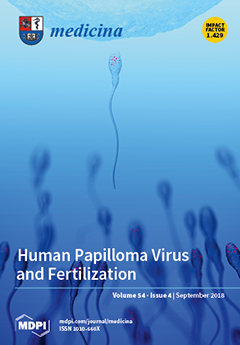Background and objectives: In pediatric chronic health conditions, health-related quality of life (HRQOL) is a useful indicator of health, development, and well-being. The purpose of the study was to assess the effect of clinical and environmental factors on the HRQOL of children and adolescents with spina bifida (SB).
Materials and methods: A cross-sectional study of the sample of 99 children and adolescents with SB aged 5 to 17 years. The questionnaires used in the study were the Spina Bifida Health-Related Quality of Life instrument (HRQOL-SB), and the Participation and Environment Measure for Children and Youth. Medical data were obtained from the medical records and the clinical examination.
Results: A multivariate linear regression revealed that the most potent predictors of the HRQOL in children with SB were the community overall environmental supports (β = 0.504;
p = 0.0001), a number of health conditions (β = −0.395;
p = 0.0001), access to personal transportation (β = 0.236;
p = 0.023), and supplies (β = 0.181;
p = 0.031), explaining 80.3% of the variance in the SB-HRQOL scores. The most significant predictors of the HRQOL in adolescents were a number of health conditions (β = −0.387;
p = 0.0001), cognitive demands of activities at home (β = 0.345;
p = 0.0001), supplies (β = 0.267;
p = 0.0001), money (β = 0.303;
p = 0.0001), physical layout at school (β = 0.188;
p = 0.008), and access to public transportation (β = 0.206;
p = 0.019), explaining 89.5% of the variance in the SB-HRQOL scores.
Conclusions: Both clinical and environmental factors determined the HRQOL of children and adolescents with SB. Environmental supports and resources contributed to HRQOL more than medical problems, especially in adolescents. The number of associated medical problems, reflecting disease severity, was the more potent clinical predictor compared to an individual health problem.
Full article






